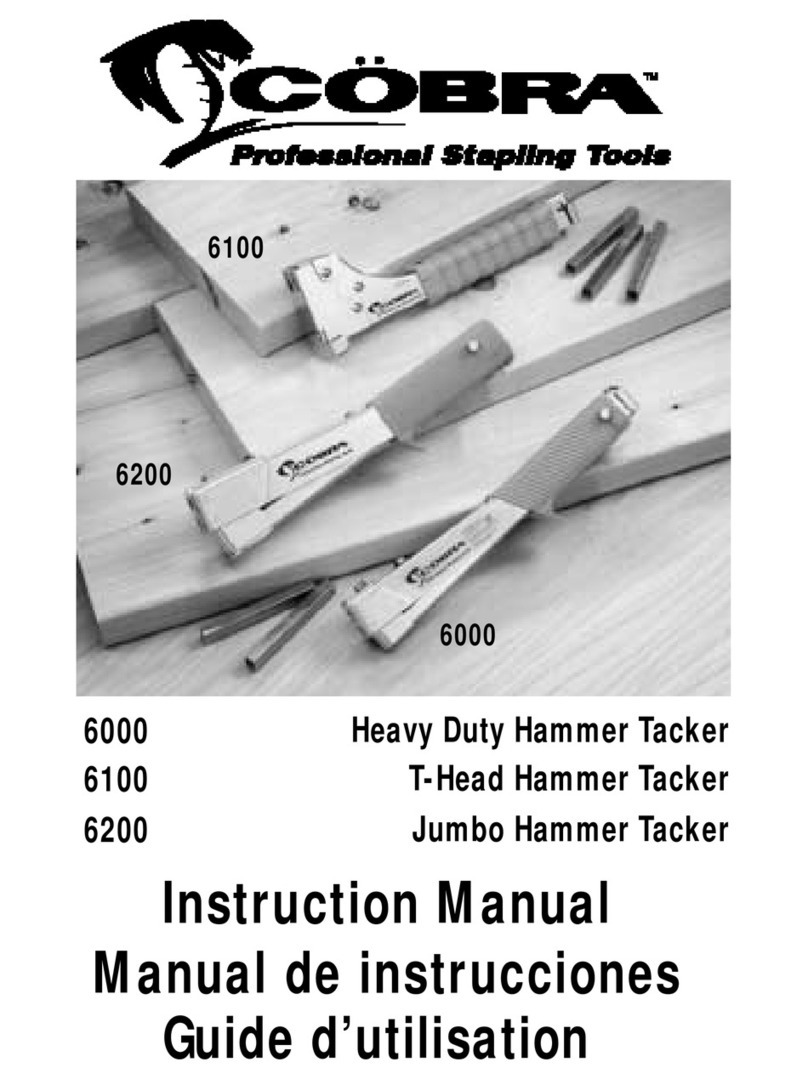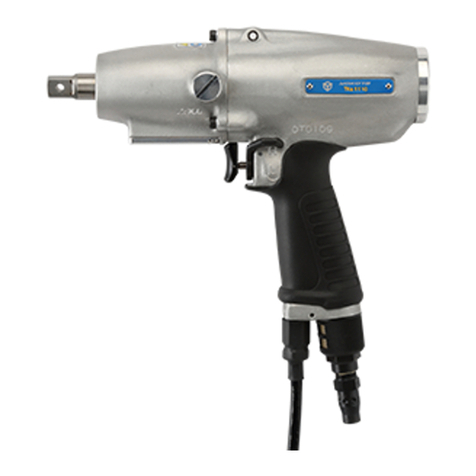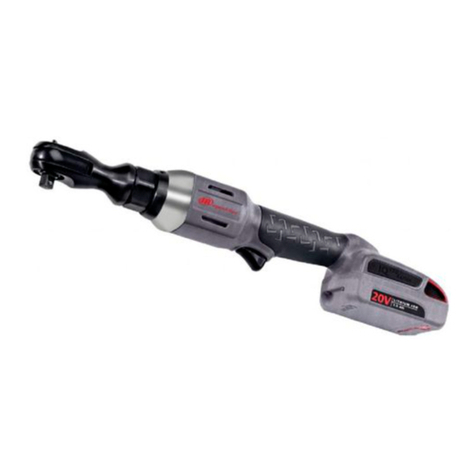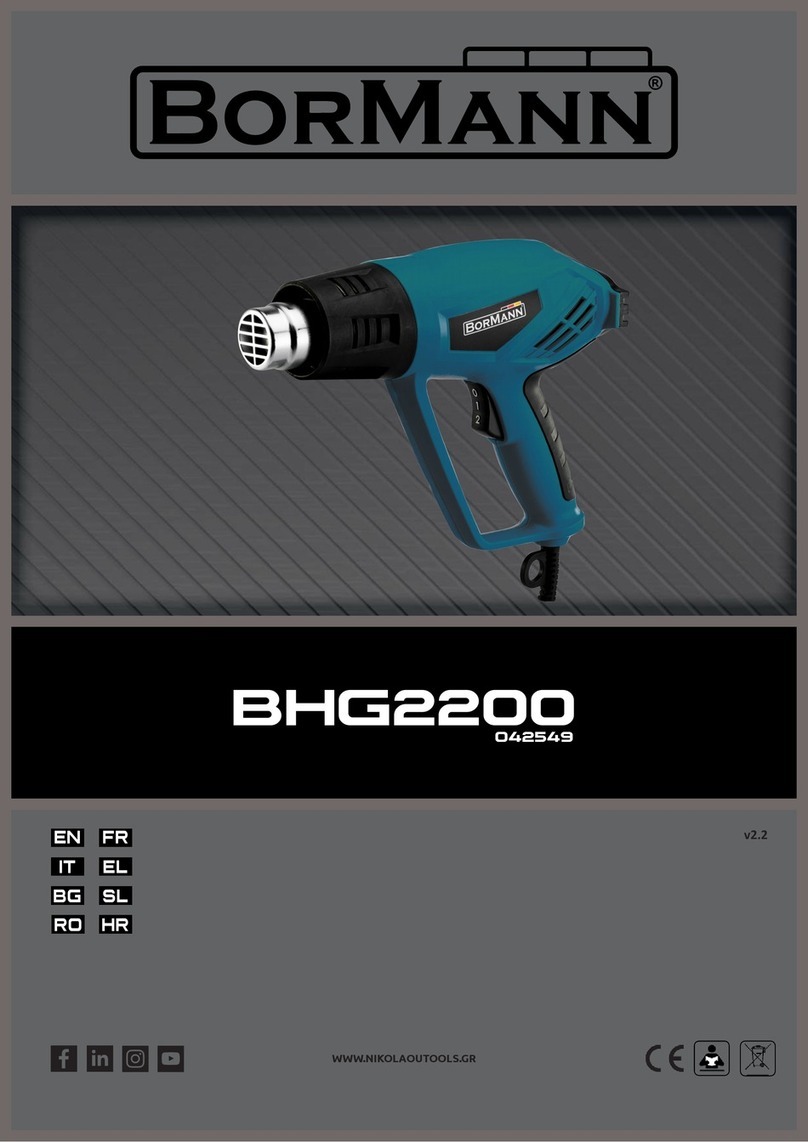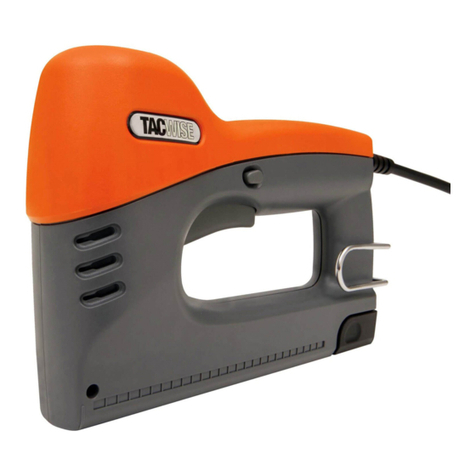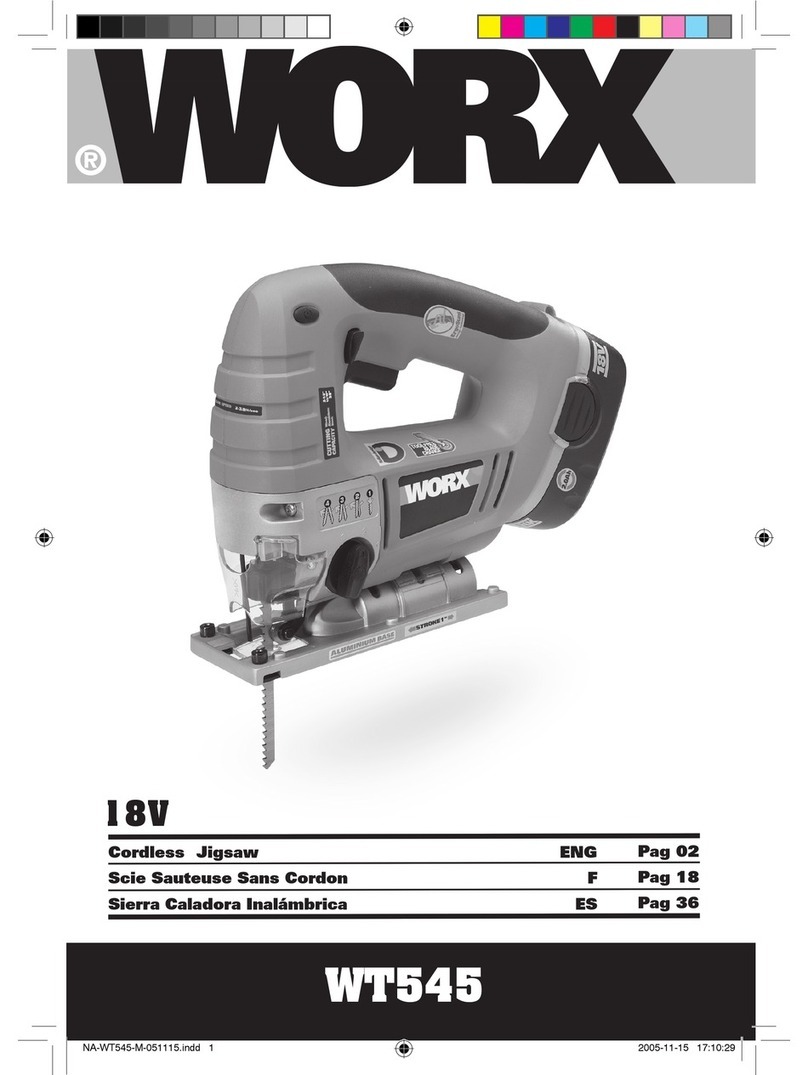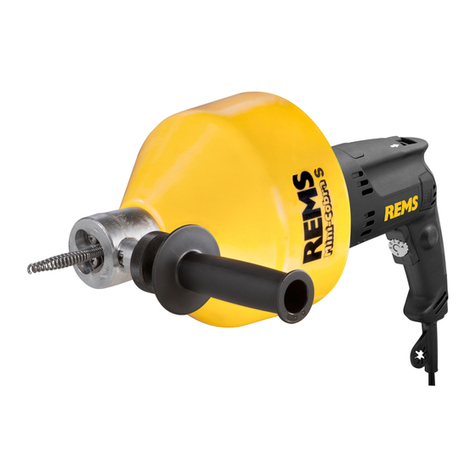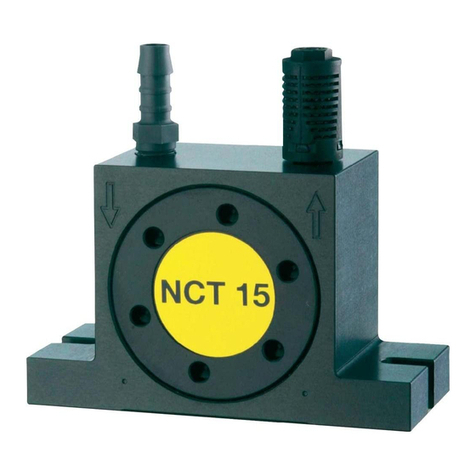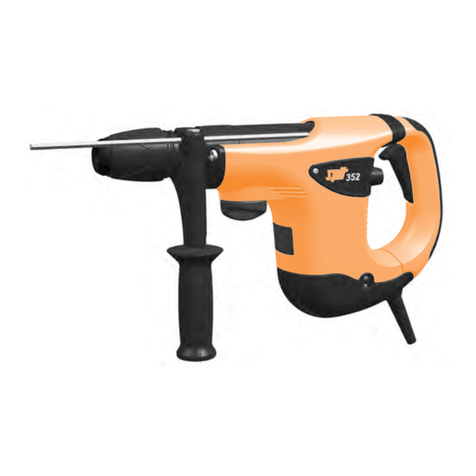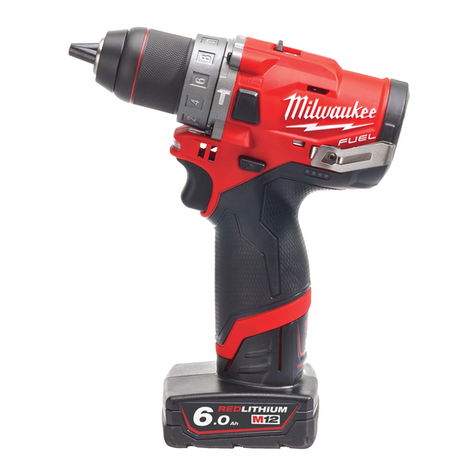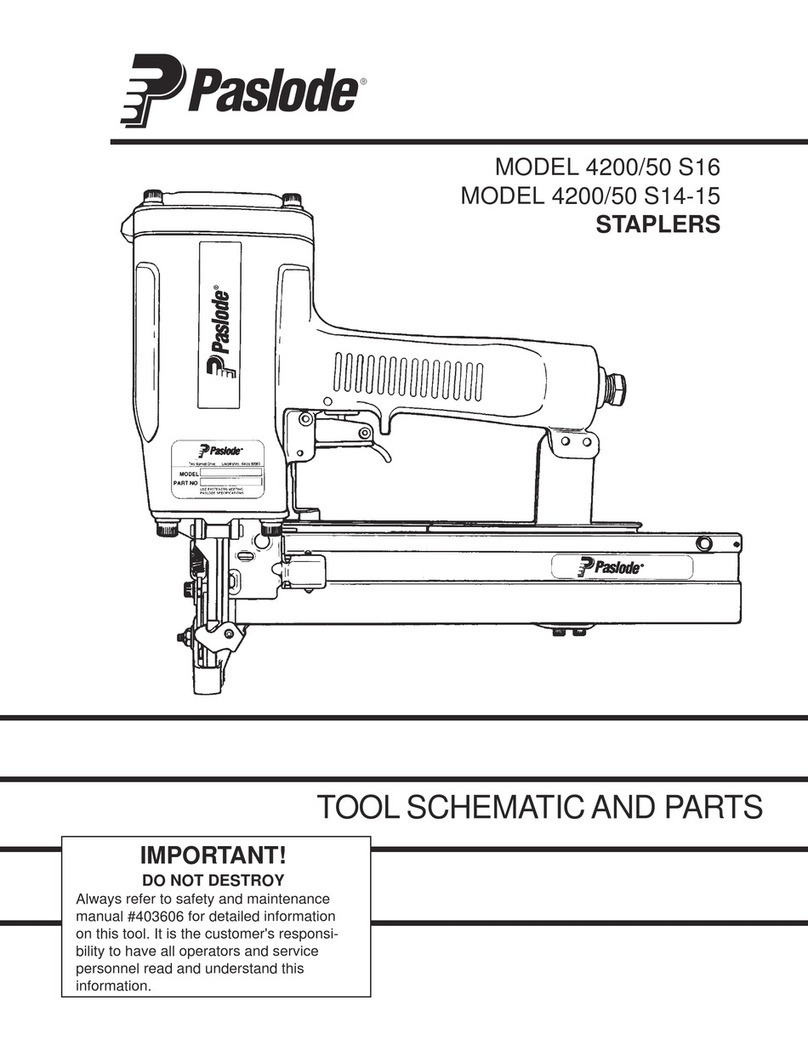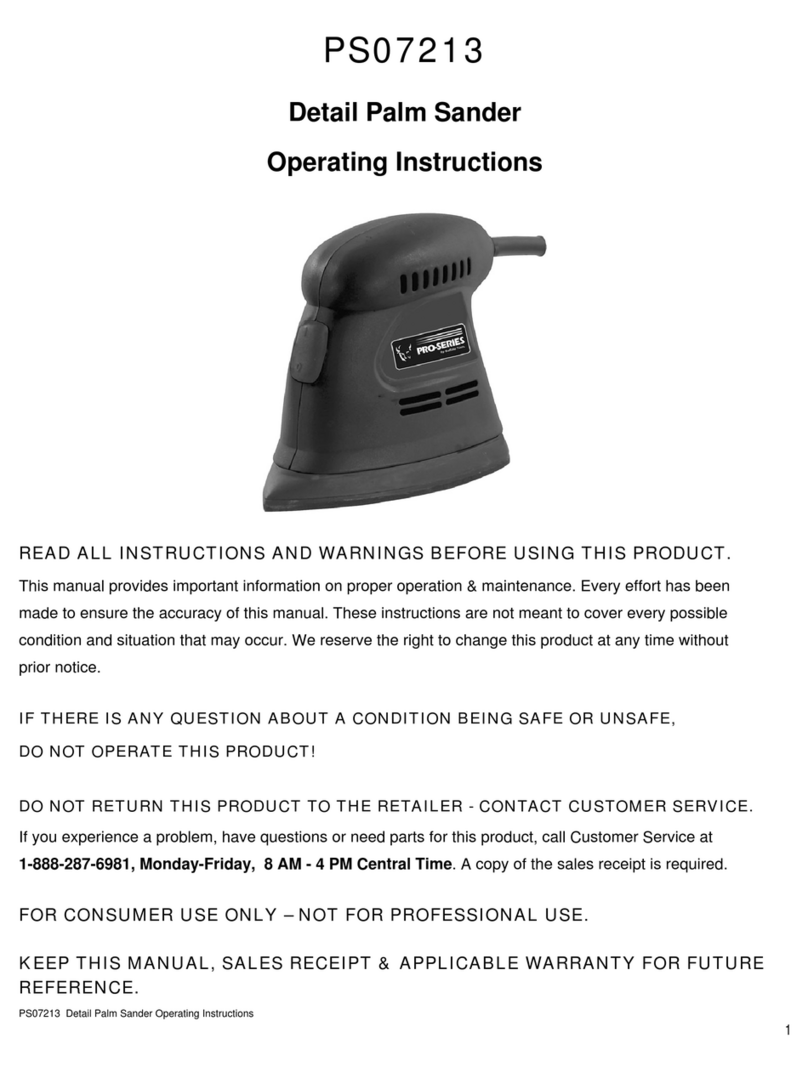Cobra PRO Maintenance and service guide

Safety and operating instructions
Petrol breakers
Valid for United States of America only
© 2010 Atlas Copco Construction Tools AB | No. 9800 0995 93 | 2010-01-12
Original instructions
COBRA PRO, TT, TT-AWD


Contents
Introduction........................................................................5
About the Safety and operating instructions..........................................5
Safety instructions.................................................................6
Safety signal words..............................................................6
Personal precautions and qualifications...........................................6
Personal protective equipment...................................................6
Drugs, alcohol or medication....................................................6
Installation, precautions..........................................................6
Operation, precautions...........................................................6
Maintenance, precautions.......................................................10
Storage, precautions............................................................11
Overview.........................................................................12
Design and function............................................................12
Choosing the correct breaker for a task..........................................12
Main parts.....................................................................12
Labels.........................................................................13
Dataplate....................................................................13
Noise level label..............................................................13
Warning label................................................................13
Emission compliance label.....................................................13
Transport.........................................................................14
Installation........................................................................14
Fuel...........................................................................14
Two-stroke oil................................................................14
Mixingthepetrolandoil........................................................14
Filling.......................................................................14
AWD - Audio Warning Device....................................................14
Insertion tool...................................................................15
Selectingtherightinsertiontool.................................................15
Narrowchisel.................................................................15
Moilpoint....................................................................15
Wide bladed chisel............................................................15
Checkingforwearonthetoolshank.............................................16
Operation.........................................................................16
Start and stop..................................................................16
Cold start....................................................................16
Restarting a warm machine....................................................16
Restarting an overheated machine..............................................16
Stopping.....................................................................16
Operating......................................................................16
Starting a cut.................................................................16
Breaking.....................................................................17
Breaking at high altitude.......................................................17
Tie tamping..................................................................17
When taking a break............................................................17
Maintenance......................................................................17
Every day......................................................................18
Wear check..................................................................18
Air filter check................................................................18
3© 2010 Atlas Copco Construction Tools AB | No. 9800 0995 93 | 2010-01-12
Original instructions
ContentsCOBRA PRO, TT, TT-AWD

Spark plug check.............................................................18
Hammermechanism oil check..................................................18
Every month...................................................................19
Gearbox oil level check........................................................19
Every year.....................................................................19
Repair............................................................................19
Replacing the starter cord.......................................................19
Troubleshooting...................................................................20
Storage...........................................................................21
Disposal..........................................................................21
Technical data.....................................................................22
Products.......................................................................22
Machine data...................................................................22
Gearbox unit...................................................................22
Impact unit.....................................................................23
Noise and vibration declaration statement........................................23
Additional vibration information.................................................23
Noise and vibration data........................................................24
EC Declaration of Conformity......................................................25
EC Declaration of Conformity (EC Directive 2006/42/EC)...........................25
Warranty..........................................................................26
Emission control system warranty...............................................26
General warranty conditions and limitations on liability...........................27
© 2010 Atlas Copco Construction Tools AB | No. 9800 0995 93 | 2010-01-12
Original instructions
4
COBRA PRO, TT, TT-AWDContents

Introduction
Thank you for choosing a product from Atlas Copco. Since 1873, we have been
committed to finding new and better ways of fulfilling our customers' needs.
Through the years, we have developed innovative and ergonomic product
designs that have helped customers improve and rationalize their daily work.
Atlas Copco has a strong global sales and service network, consisting of
customer centers and distributors worldwide. Our experts are highly trained
professionals with extensive product knowledge and application experience.
In all corners of the world, we can offer product support and expertise to ensure
that our customers can work at maximum efficiency at all times.
For more information please visit: www.atlascopco.com
Atlas Copco Construction Tools AB
105 23 Stockholm
Sweden
About the Safety and operating
instructions
The aim of the instructions is to provide you with knowledge of how to use the
petrol breaker in an efficient, safe way. The instructions also give you advice
and tell you how to perform regular maintenance on the petrol breaker.
Before using the petrol breaker for the first time you must read these instructions
carefully and understand all of them.
5© 2010 Atlas Copco Construction Tools AB | No. 9800 0995 93 | 2010-01-12
Original instructions
Safety and operating instructionsCOBRA PRO, TT, TT-AWD

Safety instructions
To reduce the risk of serious injury or death to
yourself or others, read and understand the Safety
and operating instruction before installing, operating,
repairing, maintaining, or changing accessories on
the machine.
Post this Safety and operating instruction at work
locations, provide copies to employees, and make
sure that everyone reads the Safety and operating
instruction before operating or servicing the machine.
In addition, the operator or the operator's employer
must assess the specific risks that may be present
as a result of each use of the machine.
Safety signal words
The safety signal words Danger, Warning and
Caution have the following meanings:
Indicates a hazardous situation
which, if not avoided, will result
in death or serious injury.
DANGER
Indicates a hazardous situation
which, if not avoided, could
result in death or serious injury.
WARNING
Indicates a hazardous situation
which, if not avoided, could
result in minor or moderate
injury.
CAUTION
Personal precautions and
qualifications
Only qualified and trained persons may operate or
maintain the machine. They must be physically able
to handle the bulk, weight, and power of the tool.
Always use your common sense and good
judgement.
Personal protective equipment
Always use approved protective equipment.
Operators and all other persons in the working area
must wear protective equipment, including at a
minimum:
●Protective helmet
●Hearing protection
●Impact resistant eye protection with side protection
●Respiratory protection when appropriate
●Protective gloves
●Proper protective boots
●Appropriate work overall or similar clothing (not
loose-fitting) that covers your arms and legs.
Drugs, alcohol or medication
WARNING Drugs, alcohol or medication
Drugs, alcohol or medication may impair your
judgment and powers of concentration. Poor
reactions and incorrect assessments can lead to
severe accidents or death.
►Never use the machine when you are tired or
under the influence of drugs, alcohol or
medication.
►No person who is under the influence of drugs,
alcohol or medication may operate the machine.
Installation, precautions
WARNING Ejected insertion tool
If the tool retainer on the machine is not in a locked
position, the inserted tool can be ejected with force,
which can cause personal injury.
►Always stop the machine before changing the
inserted tool or accessories.
►Never point the inserted tool at yourself or anyone
else.
►Make sure that the insertion tool is fully inserted
and the tool retainer is in a locked position before
the machine is started.
►Check the lock function by pulling the inserted tool
outwards powerfully.
WARNING Moving or slipping insertion tool
An incorrect dimension of the inserted tool’s shank
can result in that the inserted tool is lost or is slipping
out during operation. Risk of severe injury or crushed
hands and fingers.
►Check that the insertion tool has the shank length
and dimensions that the machine is intended for.
►Never use an insertion tool without a collar.
Operation, precautions
DANGER Explosion hazard
If a warm insertion tool or exhaust pipe comes into
contact with explosives, an explosion could occur.
During operating with certain materials, sparks and
ignition can occur. Explosions will lead to severe
injuries or death.
►Never operate the machine in any explosive
environment.
►Never use the machine near flammable materials,
fumes or dust.
►Make sure that there are no undetected sources
of gas or explosives.
© 2010 Atlas Copco Construction Tools AB | No. 9800 0995 93 | 2010-01-12
Original instructions
6
COBRA PRO, TT, TT-AWDSafety and operating instructions

►Avoid contact with the warm exhaust pipe or the
bottom of the machine.
DANGER Fuel hazard
The fuel (petrol and oil) is extremely flammable and
petrol fumes can explode when ignited, causing
serious injury or death.
►Protect your skin from contact with the fuel. If fuel
has penetrated the skin, consult a qualified health
professional.
►Never remove the filler cap, and never fill the fuel
tank when the machine is hot.
►Mix the fuel and fill the fuel tank outdoors or in a
clean and well ventilated place, free from sparks
and open flames. Fill the fuel tank at least ten
meters (30 feet) from the place where the machine
is to be used.
►Release the filler cap slowly to let pressure
escape.
►Never overfill the fuel tank.
►Make sure the filler cap is screwed on when the
machine is used.
►Avoid spilling fuel on the machine, wipe off any
spilled fuel.
►Check regularly for fuel leaks. Never use the
machine if it is leaking fuel.
►Never use the machine in the proximity of material
that can generate sparks. Remove all hot or
spark-generating devices before starting the
machine.
►Never smoke when filling the fuel tank or when
working with the machine or servicing it.
►Only store fuel in a container that is specially
constructed and approved for the purpose.
►Consumed petrol and oil containers must be taken
care of and returned to the retailer.
►Never use your fingers to check for fluid leaks.
WARNING Unexpected movements
The inserted tool is exposed to heavy strains when
the machine is used. The inserted tool may break
due to fatigue after a certain amount of use. If the
inserted tool breaks or gets stuck, there may be
sudden and unexpected movement that can cause
injuries. Furthermore, losing your balance or slipping
may cause injury.
►Make sure that you always keep a stable position
with your feet as far apart as your shoulder width,
and keeping a balanced body weight.
►Always inspect the equipment prior to use. Never
use the equipment if you suspect that it is
damaged.
►Make sure that the handles are clean and free of
grease and oil.
►Keep your feet away from the inserted tool.
►Stand firmly and always hold on to the machine
with both hands.
►Never start the machine when it is lying on the
ground.
►Never ‘ride’ on the machine with one leg over the
handle.
►Never strike or abuse the equipment.
►Check regularly for wear on the insertion tool, and
check whether there are any signs of damage or
visible cracks.
►Pay attention and look at what you are doing.
7© 2010 Atlas Copco Construction Tools AB | No. 9800 0995 93 | 2010-01-12
Original instructions
Safety and operating instructionsCOBRA PRO, TT, TT-AWD

WARNING Dust and fume hazard
Dusts and/or fumes generated or dispersed when
using the machine may cause serious and permanent
respiratory disease, illness, or other bodily injury (for
example, silicosis or other irreversible lung disease
that can be fatal, cancer, birth defects, and/or skin
inflammation).
Some dusts and fumes created by drilling, breaking,
hammering, sawing, grinding and other construction
activities contain substances known to the State of
California and other authorities to cause respiratory
disease, cancer, birth defects, or other reproductive
harm. Some examples of such substances are:
●Crystalline silica, cement, and other masonry
products.
●Arsenic and chromium from chemically-treated
rubber.
●Lead from lead-based paints.
Dust and fumes in the air can be invisible to the
naked eye, so do not rely on eye sight to determine
if there is dust or fumes in the air.
To reduce the risk of exposure to dust and fumes,
do all of the following:
►Perform site-specific risk assessment. The risk
assessment should include dust and fumes
created by the use of the machine and the
potential for disturbing existing dust.
►Use proper engineering controls to minimize the
amount of dust and fumes in the air and to
minimize build-up on equipment, surfaces,
clothing, and body parts. Examples of controls
include: exhaust ventilation and dust collection
systems, water sprays, and wet drilling. Control
dusts and fumes at the source where possible.
Make sure that controls are properly installed,
maintained and correctly used.
►Wear, maintain and correctly use respiratory
protection as instructed by your employer and as
required by occupational health and safety
regulations. The respiratory protection must be
effective for the type of substance at issue (and if
applicable, approved by relevant governmental
authority).
►Work in a well ventilated area.
►If the machine has an exhaust, direct the exhaust
so as to reduce disturbance of dust in a dust filled
environment.
►Operate and maintain the machine as
recommended in the operating and safety
instructions
►Select, maintain and replace consumables/
inserted tools/ other accessory as recommended
in the operating and safety instructions. Incorrect
selection or lack of maintenance of consumables/
inserted tools/ other accessories may cause an
unnecessary increase in dust or fumes.
►Wear washable or disposable protective clothes
at the worksite, and shower and change into clean
clothes before leaving the worksite to reduce
exposure of dust and fumes to yourself, other
persons, cars, homes, and other areas.
►Avoid eating, drinking, and using tobacco products
in areas where there is dust or fumes.
►Wash your hands and face thoroughly as soon as
possible upon leaving the exposure area, and
always before eating, drinking, using tobacco
products, or making contact with other persons.
►Comply with all applicable laws and regulations,
including occupational health and safety
regulations.
►Participate in air monitoring, medical examination
programs, and health and safety training programs
provided by your employer or trade organizations
and in accordance with occupational health and
safety regulations and recommendations. Consult
with physicians experienced with relevant
occupational medicine.
►Work with your employer and trade organization
to reduce dust and fume exposure at the worksite
and to reduce the risks. Effective health and safety
programs, policies and procedures for protecting
workers and others against harmful exposure to
dust and fumes should be established and
implemented based on advice from health and
safety experts. Consult with experts.
DANGER Exhaust gas hazard
The exhaust gas from the machine’s combustion
engine contains carbon monoxide which is
poisonous, and chemicals known to the State of
California and other authorities to cause cancer, birth
defects, or other reproductive harm. Inhalation of
exhaust fumes can cause serious injury, illness, or
death.
►Never inhale exhaust fumes.
►Never operate the machine indoors or in a poorly
ventilated area.
►Never stand in a deep hole, ditch, or simular
surrounding during operating.
© 2010 Atlas Copco Construction Tools AB | No. 9800 0995 93 | 2010-01-12
Original instructions
8
COBRA PRO, TT, TT-AWDSafety and operating instructions

WARNING Projectiles
Failure of the work piece, of accessories, or even of
the machine itself may generate high velocity
projectiles. During operating, splinters or other
particles from the working material may become
projectiles and cause personal injury by striking the
operator or other persons. To reduce these risk:
►Use approved personal protective equipment and
safety helmet, including impact resistant eye
protection with side protection.
►Make sure that no unauthorised persons trespass
into the working zone.
►Keep the workplace free from foreign objects.
►Ensure that the work piece is securely fixed.
WARNING Splinters hazard
Using the insertion tool as a hand struck tool can
result in splinters hitting the operator and can cause
personal injury.
►Never use a insertion tool as a hand struck tool.
They are specifically designed and heat-treated
to be used only in a machine.
WARNING Slipping, tripping and falling
hazards
There is a risk of slipping or tripping or falling, for
example tripping on the hoses or on other objects.
Slipping or tripping or falling can cause injury. To
reduce this risk:
►Always make sure that no hose or other object is
in your way or in any other person's way.
►Always make sure you are in a stable position with
your feet as far apart as your shoulders width and
keeping a balanced body weight.
WARNING Motion hazards
When using the machine to perform work-related
activities, you may experience discomfort in the
hands, arms, shoulders, neck, or other parts of the
body.
►Adopt a comfortable posture whilst maintaining
secure footing and avoiding awkward off-balanced
postures.
►Changing posture during extended tasks may help
avoid discomfort and fatigue.
►In case of persistent or recurring symptoms,
consult a qualified health professional.
WARNING Vibration hazards
Normal and proper use of the machine exposes the
operator to vibration. Regular and frequent exposure
to vibration may cause, contribute to, or aggravate
injury or disorders to the operator’s fingers, hands,
wrists, arms, shoulders and/or nerves and blood
supply or other body parts, including debilitating
and/or permanent injuries or disorders that may
develop gradually over periods of weeks, months, or
years. Such injuries or disorders may include damage
to the blood circulatory system, damage to the
nervous system, damage to joints, and possibly
damage to other body structures.
If numbness, persistent recurring discomfort, burning
sensation, stiffness, throbbing, tingling, pain,
clumsiness, weakened grip, whitening of the skin, or
other symptoms occur at any time, when operating
the machine or when not operating the machine, stop
operating the machine, tell your employer and seek
medical attention. Continued use of the machine after
the occurrence of any such symptom may increase
the risk of symptoms becoming more severe and/or
permanent.
Operate and maintain the machine as recommended
in these instructions, to prevent an unnecessary
increase in vibration.
The following may help to reduce exposure to
vibration for the operator:
►Let the tool do the job. Use a minimum hand grip
consistent with proper control and safe operation.
►If the machine has vibration absorbing handles,
keep them in a central position, avoid pressing the
handles into the end stops.
►When the percussion mechanism is activated, the
only body contact with the machine you should
have are your hands on the handle or handles.
Avoid any other contact, for example supporting
any part of the body against the machine or
leaning onto the machine trying to increase the
feed force. It is also important not to keep the start
and stop device engaged while extracting the tool
from the broken work surface.
►Make sure that the inserted tool is well-maintained
(including sharpness, if a cutting tool), not worn
out, and of the proper size. Insertion tools that are
not well-maintained, or that are worn out, or that
are not of the proper size result in longer time to
complete a task (and a longer period of exposure
to vibration) and may result in or contribute to
higher levels of vibration exposure.
►Immediately stop working if the machine suddenly
starts to vibrate strongly. Before resuming the
work, find and remove the cause of the increased
vibrations.
►Never grab, hold or touch the inserted tool when
using the machine.
9© 2010 Atlas Copco Construction Tools AB | No. 9800 0995 93 | 2010-01-12
Original instructions
Safety and operating instructionsCOBRA PRO, TT, TT-AWD

►Participate in health surveillance or monitoring,
medical exams and training programs offered by
your employer and when required by law.
►When working in cold conditions wear warm
clothing and keep hands warm and dry.
See the ”Noise and vibration declaration statement”
for the machine, including the declared vibration
values. This information can be found at the end of
these Safety and operating instructions.
DANGER Electrical hazard
The machine is not electrically insulated. If the
machine comes into contact with electricity, serious
injuries or death may result.
►Never operate the machine near any electric wire
or other source of electricity.
►Make sure that there are no concealed wires or
other sources of electricity in the working area.
WARNING Concealed object hazard
During operating, concealed wires and pipes
constitute a danger that can result in serious injury.
►Check the composition of the material before
operating.
►Watch out for concealed cables and pipes for
example electricity, telephone, water, gas and
sewage lines etc.
►If the inserted tool seems to have hit a concealed
object, switch off the machine immediately.
►Make sure that there is no danger before
continuing.
WARNING Involuntary start
Involuntary start of the machine may cause injury.
►Keep your hands away from the start and stop
device until you are ready to start the machine.
►Learn how the machine is switched off in the event
of an emergency.
WARNING Noise hazard
High noise levels can cause permanent and disabling
hearing loss and other problems such as tinnitus
(ringing, buzzing, whistling, or humming in the ears).
To reduce risks and prevent an unnecessary increase
in noise levels:
►Risk assessment of these hazards and
implementation of appropriate controls is essential.
►Operate and maintain the machine as
recommended in these instructions.
►Select, maintain and replace the insertion tool as
recommended in these instructions.
►If the machine has a silencer, check that it is in
place and in good working condition.
►Always use hearing protection.
►Use damping material to prevent work pieces from
'ringing'.
WARNING Unstable position hazard
During operation of the machine, there is a risk for
falling, tripping and/or coming in contact with the
inserted tool, which can cause injury. This risk
increases if you work in an unstable position or on
any unstable ground, object or surface. To reduce
this risk:
►Never work in an unstable position.
►Always make sure you are in a stable position with
your feet as far apart as your shoulder width and
keeping a balanced body weight.
►Never stand on any unstable ground, objects or
surfaces.
WARNING Slippery machine surface hazard
There is a risk that the machine (for example, the
handle and other surfaces) is slippery due to grease,
oil, or other substances. If the machine is slippery,
there is a risk that you might lose your grip, drop the
machine, and/or come in contact with the inserted
tool during operation of the machine. Any such event
can cause injury. To reduce this risk:
►Always make sure that the handles and other
gripping surfaces of the machine are not slippery.
►Always make sure that the handles and other
gripping surfaces are free from grease and oil.
Maintenance, precautions
WARNING Machine modification
Any machine modification may result in bodily injuries
to yourself or others.
►Never modify the machine. Modified machines are
not covered by warranty or product liability.
►Always use original parts, insertion tools and
accessories approved by Atlas Copco.
►Change damaged parts immediately.
►Replace worn components in good time.
CAUTION High temperature
The machine's front cover, exhaust pipe, and bottom
become hot during operation. Touching it can lead
to burns.
►Never touch a hot front cover.
►Never touch the hot exhaust pipe.
►Never touch the bottom of the machine when its
hot.
© 2010 Atlas Copco Construction Tools AB | No. 9800 0995 93 | 2010-01-12
Original instructions
10
COBRA PRO, TT, TT-AWDSafety and operating instructions

►Wait until the front cover, exhaust pipe, and bottom
of the machine has cooled down before carrying
out maintenance work.
CAUTION Hot insertion tool
The tip of the insertion tool can become hot and
sharp when used. Touching it can lead to burns and
cuts.
►Never touch a hot or sharp insertion tool.
►Wait until the insertion tool has cooled down before
carrying out maintenance work.
Storage, precautions
♦Keep the machine and tools in a safe place, out
of the reach of children and locked up.
11© 2010 Atlas Copco Construction Tools AB | No. 9800 0995 93 | 2010-01-12
Original instructions
Safety and operating instructionsCOBRA PRO, TT, TT-AWD

Overview
To reduce the risk of serious injury or death to
yourself or others, read the Safety instructions
section found on the previous pages of this
manual before operating the machine.
Design and function
Cobra Pro is designed for medium to heavy
demolition of material such as concrete and asphalt.
Cobra TT and TT-AWD are designed for tie tamping
and can also be used for medium demolition of
material such as asphalt.
The petrol breaker is designed for vertical use only.
No other use is permitted.
To choose the correct insertion tool, check the tool
shank dimension on the machine, and see the spare
parts list.
Choosing the correct breaker
for a task
It is important to choose the correct size of breaker
for the work to be performed.
A breaker that is too small means that the work will
take longer.
A breaker that is too large means that there must be
frequent repositioning, which is unnecessarily tiring
for the operator.
A simple rule for choosing the correct size of breaker
is that a normal sized piece of broken material should
be removed from the workpiece within 10–20
seconds operation.
●If it takes less than 10 seconds a smaller breaker
should be selected.
●If it takes more than 20 seconds a larger breaker
should be selected.
Main parts
A. Fuel filler cap
B. Carburettor
C. Air filter
D. Flywheel
E. Fan cover
F. Throttle lever
G. Ignition coil
H. Drive piston
I. Fuel tank
J. Silencer
K. Chisel fixture
L. Decompression valve
M. Engine piston
N. Spark plug
O. Hammer piston
P. Hammer piston guide
Q. Tool sleeve
© 2010 Atlas Copco Construction Tools AB | No. 9800 0995 93 | 2010-01-12
Original instructions
12
COBRA PRO, TT, TT-AWDSafety and operating instructions

R. Tool retainer
Labels
The machine is fitted with labels containing important
information about personal safety and machine
maintenance. The labels shall be in such condition
that they are easy to read. New labels can be ordered
from the spare parts list.
Data plate
A. Machine type
B. Serial number
C. The warning symbol together with the book
symbol means that the user must read the
Safety and operating instructions before the
machine is used for the first time.
D. The CE symbol means that the machine is
EC-approved. See the EC Declaration of
Conformity which is delivered with the machine
for more information.
Noise level label
The label indicates the guaranteed noise level
corresponding to EC-directive 2000/14/EC. See
"Technical data" for accurate noise level.
Warning label
To reduce the risk of injury, everyone using,
installing, repairing, maintaining, changing
accessories on, or working near this tool must read
and understand the safety instructions before
performing any such task.
Operate with chisel retainer in place.
Emission compliance label
Emissions compliance period referred to on the label
indicates the number of operating hours for which
the engine has been shown to meet Federal
emissions requirements.
Category C = 50 hours, B = 125 hours, and A = 300
hours.
13© 2010 Atlas Copco Construction Tools AB | No. 9800 0995 93 | 2010-01-12
Original instructions
Safety and operating instructionsCOBRA PRO, TT, TT-AWD

Transport
WARNING Fuel hazard
►Empty the tank before transport.
Installation
Fuel
Two-stroke oil
The fuel is petrol with a 2% oil mixture (1 part oil to
50 parts petrol). Always use high quality lead-free
petrol (non-alkylat).
For the best lubricating results use Atlas Copco’s
environmentally friendly two-stroke oil, which has
been specially developed for Atlas Copco’s petrol
engined hammering and rock-drilling machines.
If Atlas Copco’s two-stroke oil is not available, use
a high quality two-stroke oil for air-cooled engines
(not two-stroke oil for outboard engines). Contact
your local Atlas Copco representative for advice on
the correct two-stroke oil.
Mixing the petrol and oil
Always mix the petrol and oil in a clean petrol can.
First add the oil and then the correct amount of petrol.
Then shake the can thoroughly. Shake the can before
every refilling.
NOTICE During long term storage of two-stroke
mixture, the oil and petrol can separate. Never mix
more fuel than you intend to use within two weeks.
Filling
WARNING Fuel hazard
The fuel (petrol and oil) is extremely flammable and
petrol fumes can explode when ignited, causing
serious injury or death.
►Protect your skin from contact with the fuel.
►Never remove the filler cap and do not fill the fuel
tank when the machine is hot.
►Never smoke when filling the fuel tank or when
working with the machine or servicing it.
►Avoid spilling fuel and wipe off any fuel spilled on
the machine.
Filling procedure
1. Stop the engine and let it cool down before filling
the tank.
2. The machine must be in a upright position when
filling it with fuel.
3. Release the filler cap slowly to let any pressure
escape.
4. Never overfill the tank. It is possible due to the
movement of the fuel within the tank to have fuel
at a higher level than the tank cap, which can
lead to a spillage of fuel if the tank cap is opened.
This can be avoided by opening the tank cap,
only when the machine is tilted and the tank cap
is at the fuel tanks highest point.
5. Make sure that the filler cap is screwed on when
the machine is used.
AWD - Audio Warning Device
Only valid for the model Cobra TT-AWD
The machine is prepared for Audio Warning Device,
if it has an electrical outlet (A) on the left side of the
front cover.
© 2010 Atlas Copco Construction Tools AB | No. 9800 0995 93 | 2010-01-12
Original instructions
14
COBRA PRO, TT, TT-AWDSafety and operating instructions

DANGER Run over
If the stop function is not working, it can result in
serious injuries or death.
►Before using the Audio Warning Device test the
function of the warning equipment.
►If the stop function is not working, contact your
nearest authorised workshop.
Checking the stop function
1. Check that plug (B) is fitted to outlet (A), so the
machine is in order to start.
2. Start the machine and then pull out the plug (B).
The machine shall stop immediately. If the
machine does not stop when the plug (B) is
removed, it must under no circumstances be
used together with Audio Warning device. For
further instructions contact your nearest
authorised workshop.
Insertion tool
CAUTION Hot insertion tool
The tip of the insertion tool can become hot and
sharp when used. Touching it can lead to burns and
cuts.
►Never touch a hot or sharp insertion tool.
►Wait until the insertion tool has cooled down before
carrying out maintenance work.
NOTICE Never cool a hot insertion tool in water, it
can result in brittleness and early failure.
Selecting the right insertion tool
Selecting the right insertion tool is a precondition for
proper machine function. It is important to select
insertion tools of high quality to avoid unnecessary
machine damage.
The machine can be destroyed if you use an incorrect
insertion tool.
Recommended insertion tools are listed in the
machine's spare parts list.
Narrow chisel
The narrow chisel is used for
demolition and cutting work in
concrete and other types of
hard materials.
Moil point
The moil point is only used for
making holes in concrete and
other types of hard materials.
Wide bladed chisel
The wide bladed chisel is used
in soft materials, such as
asphalt and frozen ground.
WARNING Vibration hazard
Using inserted tools that do not fulfil the criterias
mentioned below, will result in a longer time to
complete a task, and may result in higher levels of
vibration exposure. A worn tool will also cause
increased working time.
►Make sure that the inserted tool is well-maintained,
not worn out and of the proper size.
►Always use a sharp tool in order to work efficiently.
15© 2010 Atlas Copco Construction Tools AB | No. 9800 0995 93 | 2010-01-12
Original instructions
Safety and operating instructionsCOBRA PRO, TT, TT-AWD

Checking for wear on the tool shank
Use the gauge that corresponds to the insertion tool’s
shank dimension. See section "Technical data" for
correct tool shank dimensions.
●Check if the gauge’s hole (A) can be pushed down
on the insertion tool’s shank, this means that the
shank is worn out and the insertion tool should be
replaced.
●Check the length (B), that it is according to the
ordered machine type.
Operation
WARNING Involuntary start
Involuntary start of the machine may cause injury.
►Keep your hands away from the start and stop
device until you are ready to start the machine.
►Learn how the machine is switched off in the event
of an emergency.
Start and stop
Cold start
1. Slide the start button on the left handle
backwards.
2. Close the choke by turning the choke control
upwards.
3. Pump 5 times on the primer pump.
4. Press the decompression knob on the right side
of the engine cylinder.
5. Depress the throttle lever to full throttle and pull
on the starter handle.
6. When the machine starts, open the choke by
turning the choke control downwards.
7. Warm up the engine for 2–3 minutes.
Restarting a warm machine
1. Press the decompression knob.
2. Do not touch the throttle lever.
3. Check that the choke is open and pull on the
starter handle.
Restarting an overheated machine
If a hot engine stops after a short while, it can be due
to vapour lock. Use the following restart procedure:
1. Press the decompression knob.
2. Close the choke by turning the choke control
upwards.
3. Depress the throttle lever to full throttle and pull
on the starter handle.
4. When the machine starts, let it run for few
seconds then open the choke gradually to fully
open (this can take up to 30 seconds).
Stopping
1. Stop the machine by sliding the stop button on
the left handle forwards.
Operating
Starting a cut
♦Stand in a stable position with your feet well away
from the inserted tool.
♦Press the machine against the working surface
before you start.
♦The impact unit is activated when the machine is
pressed down and loaded. When the machine is
lifted, the impact unit disengages automatically.
♦The working speed of the machine is controlled
via the throttle lever.
♦Start collaring at such a distance from the edge
that the machine is capable of breaking the
material without levering.
© 2010 Atlas Copco Construction Tools AB | No. 9800 0995 93 | 2010-01-12
Original instructions
16
COBRA PRO, TT, TT-AWDSafety and operating instructions

♦Never break off too large pieces. Adjust the
breaking distance (A) so that the inserted tool does
not fasten.
Breaking
♦Never use the machine as a lever, the material
should be broken by impact energy.
♦If the tool fastens, never try to lift it by pulling on
the top of the fuel tank.
♦Check that the handle bar can move freely (up
and down) without binding.
♦Let the machine do the work. Never press too
hard. The vibration absorbing handle should never
be forced all the way to the bottom.
♦The feed force should be adjusted so that the
handle is pressed 'half way down'. This position
provides the best vibration damping and the best
breaking force.
♦Avoid working in extremely hard material such as
granite and reinforcing iron, since such materials
can cause strong vibrations.
♦Avoid idling; operation without a inserted tool and
operation with the machine lifted.
♦Release the throttle lever when the machine is
lifted.
Breaking at high altitude
To get the best result when breaking at high altitude,
do the following:
♦Check that the air filter is in good condition.
♦If necessary, lean the fuel mix by turning the main
nozzle (A) clockwise.
♦When finished with operating at high altitude, turn
back the main nozzle (A) to the default position.
Tie tamping
Cobra TT and Cobra TT-AWD are designed for tie
tamping.
Tie tamping is used for local maintenance of railway
tracks in an area up to 30 square meters. Tie tamping
stabilizes the ballast under the sleepers.
To get the best result when tie tamping, do the
following:
♦Two operators must operate on each side of the
sleeper. Operating on opposite sides will compress
the ballast down and up, and fill all gaps and
create stability.
♦Lean the machine when operating. Do not operate
in a straight angle, it will compress the ballast too
deeply and reduce the stability.
♦Operate for 2-3 seconds at one point before
moving to another operating point. Operating too
long time at one point will press the ballast too
deeply.
♦Release the throttle lever when the machine is
lifted.
When taking a break
♦Stop the machine during breaks.
♦During all breaks you must put the machine away
so that there is no risk for unintentional start.
Maintenance
Regular maintenance is a basic requirement for the
continued safe and efficient use of the machine.
Follow the maintenance instructions carefully.
17© 2010 Atlas Copco Construction Tools AB | No. 9800 0995 93 | 2010-01-12
Original instructions
Safety and operating instructionsCOBRA PRO, TT, TT-AWD

♦Before starting maintenance on the machine, clean
it in order to avoid exposure to hazard substances.
See “Dust and fume hazards”
♦Use only authorised parts. Any damage or
malfunction caused by the use of unauthorised
parts is not covered by warranty or product liability.
♦When cleaning mechanical parts with solvent,
comply with appropriate health and safety
regulations and ensure there is satisfactory
ventilation.
♦For major service to the machine, contact your
nearest authorised workshop.
♦After each service, check that the machine's
vibration level is normal. If not, contact your
nearest authorised workshop.
Every day
Before undertaking any maintenance or changing
the inserted tool, turn the machine off.
♦Perform a general inspection and check that there
are no leaks and no damage.
♦Check that the tool retainer is not worn and that it
functions as it should. Never use the equipment
if you suspect that it is damaged.
♦Check that the O-ring on the oil plug is undamaged
and seals properly.
♦Check that the oil plug is tight regularly.
♦Check for wear in the tool bush.
♦Check the insertion tool, make sure that it is sharp
and not worn out.
♦Change damaged parts immediately.
♦Replace worn components in good time.
In order to ensure that the machine remains within
the stated vibration level values, the following checks
must be performed:
Wear check
If a inserted tool with a worn shank is used, machine
vibration will increase. Avoid such vibration by
checking for shank wear before mounting the
insertion tool on the machine.
♦Use the shank gauge that corresponds to the
dimension of the inserted tool shank. If the gauge
can be inserted up to point A in the tool bush (point
B) then the tool bush must be replaced
immediately.
Air filter check
A clogged air filter will eventually cause damage to
the engine. Check the air filter regularly.
1. Unscrew the air filter cover.
2. Tap the air filter carefully against the palm of your
hand. If the air filter is very dirty, it must be
replaced. Never wash the air filter.
3. Clean filter container.
Spark plug check
If the spark plug electrodes are very dirty or burnt
you should replace the spark plug. You will find the
spark plug under the service cover, mounted in the
cylinder head. See the section "Main parts" for
position of the spark plug.
Only use Champion RCJ8 and make sure that the
electrode gap is 0.6-0.7 mm before fitting the spark
plug.
Hammer mechanism oil check
The machine has a natural oil consumption and the
oil level in the impact unit should be checked every
day. The machine must be upright when performing
the oil check. The oil level should be at the same
height as the filling pipe.
© 2010 Atlas Copco Construction Tools AB | No. 9800 0995 93 | 2010-01-12
Original instructions
18
COBRA PRO, TT, TT-AWDSafety and operating instructions

Use only Atlas Copco IMPACT-OIL.
Every month
Gearbox oil level check
Before releasing the oil plug remove the six nuts for
the back cover. The level in the gearbox is checked
by unscrewing the oil plug. The oil level is correct
when it reaches to the bottom of the filling hole with
the machine standing upright. The volume of the
gearbox is 0.1 litre.
Every year
Overhauling should be done after 1 year of
continuous operation. Overhauling should for safety
reasons be performed by authorised personnel at an
authorised workshop.
Repair
Replacing the starter cord
Removing the old starter cord
1. Remove the starting mechanism.
2. Pull out about 40 cm (16 in.) of the cord.
3. Place the starter cord in the recess (A) in the
pulley.
4. Rotate the pulley until all tension is released.
5. Remove the lock ring and lift out the pulley
complete with spring and starter cord.
19© 2010 Atlas Copco Construction Tools AB | No. 9800 0995 93 | 2010-01-12
Original instructions
Safety and operating instructionsCOBRA PRO, TT, TT-AWD

Fitting a new starter cord
6. WARNING Spring tension
The starter spring may cause personal injury by
striking the operator or other persons.
►Wear impact resistant eye protection with side
protection and gloves.
Place the knot on the starter spring in the recess
on the inside of the pulley and wind in the starter
spring (anti-clockwise).
7. If the starter spring must be rewound, place the
spring-hook in the pulley groove and wind on the
spring anti-clockwise. If the spring must be
replaced, position the spring-hook above the
groove in the starter pulley. Leave the safety ring
in place, press down the spring into the starter
pulley.
8. Wind up the starter cord onto the pulley leaving
5 cm (2 in.) of slack. Locate the end of the spring
in the bushing groove, press the starter pulley
onto the bushing. Replace the lock ring.
Pre-load the starting spring
9. Place the notch in the pulley edge in line with the
starter cord guide and place the starter cord in
the notch.
10. Fit the lock ring.
11. Rotate the pulley 1 turn anti-clockwise.
12. Release the starter cord slowly.
13. Pull on the starting handle, check the function.
14. Pull out the starter cable, at the same time grip
the starter disc and check that if it can be turned
anticlockwise another 1/2 turn. If not, the spring
has been over-tightened and is touching the
bottom, the starter cable must therefore be
loosened a turn.
15. Fit the starting mechanism.
16. Check the function.
Troubleshooting
If the petrol breaker does not start, has low power or
runs unevenly, check the following points.
© 2010 Atlas Copco Construction Tools AB | No. 9800 0995 93 | 2010-01-12
Original instructions
20
COBRA PRO, TT, TT-AWDSafety and operating instructions
This manual suits for next models
2
Table of contents
Other Cobra Power Tools manuals
